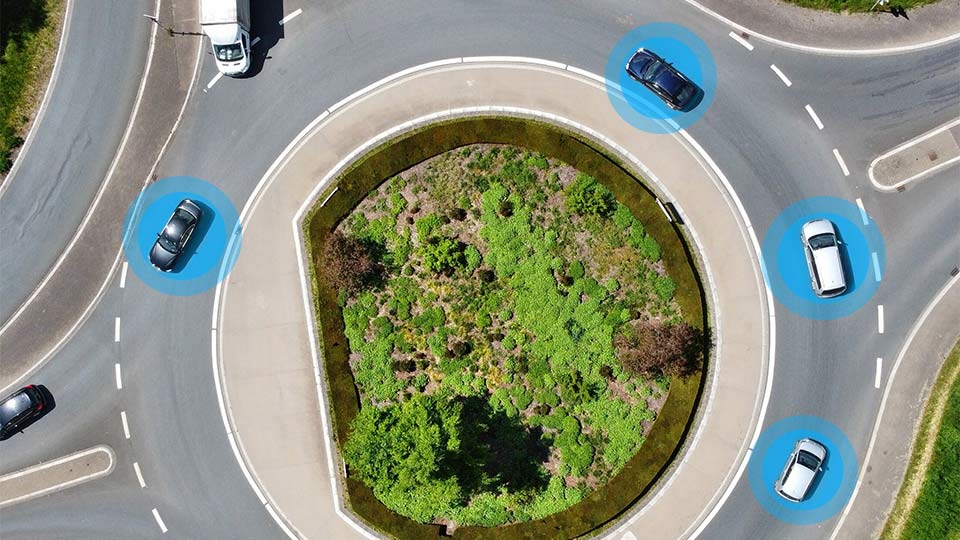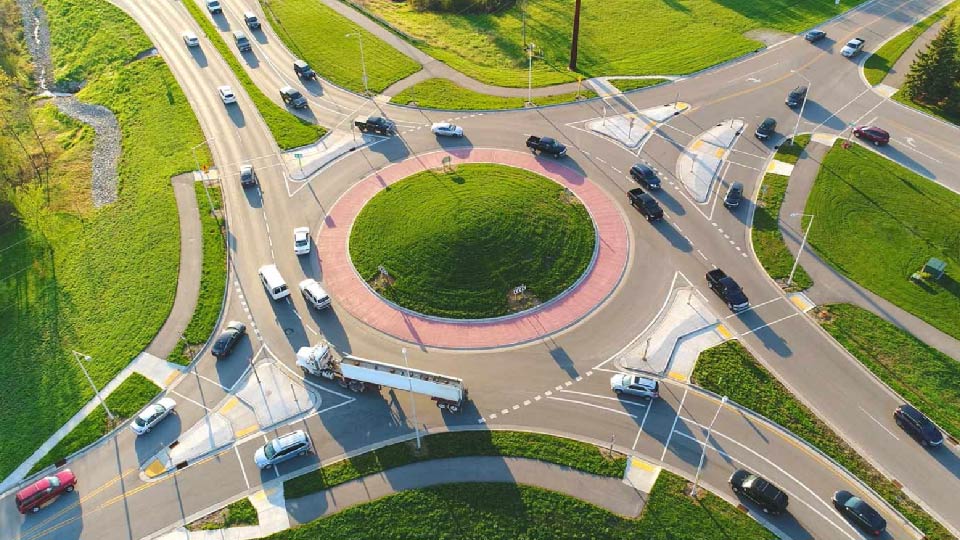
How to win the intermediary space
Published on July 12, 2021

Table of contents
- As leasing and rental converge, the crucial enablers for success are telematics and connectivity
- Mobility’s greatest transformation since 1900
- Leasing and rental: black and white
- Interesting intermediary solutions
- More than just the pandemic
- Alternatives are booming
- Telematics and connectivity as enablers
- As technology transforms, new market opportunities arise
- Competition could also be ‘coopetition’
- About Geotab
As leasing and rental converge, the crucial enablers for success are telematics and connectivity
- As part of the great transformation of mobility, the vehicle leasing and rental-car industries are converging faster than ever.
- Their mirrored approaches towards more flexibility – longer-term solutions for rental companies, shorter-term ones for lessors – have long been driven by market demand.
- However, the transformation is now taking place at a speed and depth that has been uniquely enabled by technological advances, particularly in telematics and connectivity.
- These two adjacent technologies have reached a maturity sufficient not just to optimise existing mobility solutions, but also with the potential to thoroughly transform the entire mobility paradigm itself.
- This is true in particular where most can be gained by innovation: the management of shared and electric vehicles.
In Europe’s most mature automotive markets, corporate sales (i.e., mainly for leasing and rental) have overtaken private sales as the most important market segment.
According to Deloitte, in 2020, in Europe’s Big Five markets alone, the True Fleet market (i.e., corporate fleets, mainly in operational leasing) added up to 3.83 million vehicles. These are the UK (1.18 million), Germany (992,000), France (814,000), Italy (529,000) and Spain (319,000).
Meanwhile, Europe’s rental car companies are rebounding from the impact of coronavirus, their smaller fleets – shrunk by up to a third compared to 2019’s 1.5 million – racing to catch up with strong demand. Western Europe’s rental car market remains dominated by five main players: Europcar (27%), Avis Budget (18%), Hertz, Sixt (both 16%) and Enterprise (10%).
Both for leasing and rental companies, understanding the role (and the potential) of telematics and connectivity is crucial for their success in the emergent – and convergent – new mobility ecosystem.
Mobility’s greatest transformation since 1900
The mobility ecosystem is currently undergoing its greatest transformation since the mass marketing of the automobile, starting around 1900. Throughout the 20th century and well into the 21st, the car has been the cornerstone of an extremely successful transport paradigm, which is now finally forced to come to terms with its limitations – some of which are the results of its very success.
Those limitations are brought into stark focus by the ongoing urbanisation megatrend. The UN predicts the share of the world’s population living in urban areas will rise from 55% in 2018 to 68% in 2050. If we maintain the car-centric, fossil-fuel-based transport paradigm, that will further increase congestion and pollution, which are already at levels deemed unsustainable.
According to transport intelligence company INRIX, congestion cost drivers an average of $1,374 in the U.S. (£904 in the UK and €408 in Germany) in 2019. Tellingly, reduced commuting due to lockdowns and working from home reduced those numbers significantly in 2020: $394 in the U.S., £291 in the UK and €235 in Germany.
“Covid has changed the world forever. More people are going to be working from home more of the time. Everybody is moving services to the cloud. People are more accepting of interacting virtually. This has inevitable consequences for business travel. It will not disappear, but it will decline. Businesses that revolve around business travel, will need to adapt and adjust. Employees will want less vehicles, and will need to service their travel needs in other ways. So there will be an adoption of rental and other options more than ownership.”
Neil Cawse – CEO, Geotab
As for pollution, in Europe, road transport alone accounts for 21% of all greenhouse gas emissions, which must be drastically reduced to achieve the climate objectives of the 2015 Paris Agreement.
The twin needs for more efficient and more environmentally friendly transport are driving the megatrend away from the car-centric transportation model. The new model aims to develop solutions that are user-centric, and sustainable – and preferably both at the same time. This chimes with the changing needs and wants of mobility users, who are looking for more demand-responsive solutions that meet their need for personalised mobility solutions.
This megatrend is creating profound change everywhere in the mobility ecosystem, including in the vehicle leasing and vehicle rental industries.
Leasing and rental: black and white
In the past, the choice was simpler. If you wanted a car for years, you leased it. If you needed one for up to a few weeks, you rented one. While those truths remain self-evident, the lines between both industries are starting to blur.
Your typical lease contract is for three to four years and 90,000 to 120,000 km. Its long duration translates to predictability, which has advantages for both the supplier and customer of the vehicles. In operational leasing, the customer also benefits by outsourcing a host of fleet-related issues, including administration, repair and maintenance, and remarketing. The benefits in terms of TCO are considerable, which is why operational leasing has carved out such a large part of the European automotive market, especially among larger companies.
The 2020 Barometer of Arval’s Mobility Observatory showed that 36% of large and 43% of very large companies in selected countries (mainly in Europe) use operational leasing as their preferred method of vehicle financing. That still leaves plenty of room for growth: the 2021 Barometer shows 61% of companies intending to develop operational leasing in the next three years, up from 39% in 2020 – with much of the increase now due to rising interest among SMEs.
Rental is a different proposition. It offers a wide choice in terms of makes and models, and flexibility in terms of usage. However, this comes at a premium. Rental companies start a typical month with only 20% of their capacity booked. This reflects a market that is necessarily volatile and where demand is often very seasonal. This uncertainty is priced into the offer, which puts an upper limit on the rental period a customer is willing to pay for – typically a few days to no longer than a few weeks.
Due to its volatile nature, the vehicle rental market took a large hit from the pandemic. According to Statista, the number of vehicle rental users in Europe dropped from 58.9 million in 2019 to 27.5 million in 2020. The recovery will be slower than the drop, but growth is projected to resume in 2024, with 61.3 million vehicle rental users.
Interesting intermediary solutions
Granted, the division between both has never been water-tight; lease companies offer temporary cars (until the actual lease vehicle is delivered) and rental companies provide replacement cars (if the primary rented vehicle has an accident or breakdown). Those formulas are not that far apart. So there always have been hints of overlapping opportunities to be explored.
However, it is true that the success of both leasing and rental companies each in their own field has historically left a lot of space between them unexplored and unexploited. Market demands for flexible offers covering that space have long gone unanswered. But right now, this intermediary space is being filled in with a lot of interesting intermediary solutions.
Europcar, the leader in Europe's vehicle rental and car subscription market, is a good example on the rental side. The company has bundled its knowledge of long-term rentals – often limited to very local offers – and repackaged it as a range of three products to be rolled out across all markets: SuperFlex, Flex and DuoFlex. Superflex starts from one month, Flex from three months, and DuoFlex adds a second vehicle to the Flex formula.
On the leasing side, virtually all major players offer an intermediary solution: ALD Flex, Arval Mid-Term Rental and LeasePlan Flexible are just a few examples of formulas offered by lessors that cover contract ranges from a few months to a few years.
What most of these mid-term formulas share is a minimum of commitment: contracts can be cancelled virtually immediately, giving customers the maximum of what they want – flexibility.
This type of offer is ideally suited for the volatile economic environment of the late and post-pandemic economy, when projects and hires are more likely to be temporary, and corporates large or small are not willing to commit to long-time vehicle contracts as a result.
More than just the pandemic
The growth of homeworking
One major impact of the pandemic – besides sheer market volatility – has been the growth of homeworking, a trend born out of necessity, which has suddenly revealed that a lot of essential work can be done without being physically present at the office. According to a report by EAE Business School, the number of companies in Europe with staff working from home has risen from 4% in 2019 to 88% now.
While that figure is likely to decline somewhat, the homeworking trend is likely to leave a permanent mark on corporate mobility policies, leading to smaller corporate fleets, fewer company cars and an increased demand for mobility alternatives. However, the pandemic has only served to accelerate a pre-existing trend towards mobility alternatives, which was already powered by three important drivers.
From ownership to usership
Firstly, a generational trend: younger mobility users are less interested in vehicle ownership than in mobility usership. They prefer shared mobility, smart mobility, mobility budgets, mobility as a service: different terms that boil down to the same thing – a demand for easy access to alternatives to the ‘classic’ one-person, one-car model.
The rise of electrification
Secondly, governments at local, national and European level are putting the squeeze on ICE vehicles, and directing regulations and incentives to promote more sustainable alternatives, mainly the electric option. As EVs are expected to reach price parity by 2023 and range and infrastructure issues are being addressed, corporate fleets, lease and rental companies are among the pioneers promoting electrification.
New market segments
Thirdly, as the traditional leasing and rental markets have matured, providers are keen to access new market segments. In the case of leasing companies, this has meant expanding the B2B segment (e.g. corporate carsharing), and developing the B2C (e.g. private leasing), and B2E (e.g. company-backed private-lease offers to employees) segments. And for both leasing and rental companies, it has also meant exploring the potential for mid-term products in the market space between them.
Alternatives are booming
As the pandemic broke, some observers worried that the mobility industry, in crisis mode, would revert to old certainties, and start to rely again on the car-centred, fossil fuel-based paradigm.
While it is true that, by some metrics, shared mobility has suffered, especially in terms of public transport, that is certainly not true across the board. In 2020, and despite the global pandemic, carsharing services have actually increased by 10% worldwide and will continue to expand. According to Berg Insight, carsharing services will account for 971,000 vehicles worldwide by 2025. In that year, corporate carsharing will reach about 135,000 vehicles.
“Out of the pandemic comes a renewed focus on virtual, cloud and data. These were all topics that we talked about before, but the crisis has shown us their value to our own business, and to the world in general.”
Neil Cawse – CEO, Geotab
This remarkable growth has been enabled by, and is dependent upon, telematics and connectivity. The technology supporting carsharing has evolved from mere online booking systems to digital platforms that can handle all operational activities, from booking to real-time fleet management, analytics on maintenance needs and in-vehicle equipment, and also billing.
Similarly, the trend towards electrification seems to have benefited from the pandemic, rather than suffered from it. According to the IEA, sales of new electric cars reached a record 3 million in 2020, up 41% over 2019 – and this in a year in which the global automobile market contracted by 16%.
Telematics and connectivity as enablers
The boom in mobility alternatives is made possible by the technological advances in telematics. Some examples:
- By using GPS data, telematics can locate vehicles and analyse their speed and direction, both historically and in real time.
- Telematics also allows for security tracking, to prevent or help mitigate the theft of the vehicle or its cargo. Some systems allow for the remote disabling of the vehicle.
- Other data interfaces can provide insight into fuel management (usage, cost).
- Critical parameters previously only accessible in the workshop can now be monitored in real time. This level of vehicle diagnostics allows for much better maintenance planning, reducing downtime.
- Close monitoring also allows lease and rental companies to keep close tabs on how their vehicles are treated.
- Many telematics providers offer fuel card integration. Such a card can be linked to an individual, a vehicle, or both. The card is linked to a limited number of fuel stations (and their related products).
Again according to Berg Insight, we’re in the middle of a five-year period that will see the number of telematics devices virtually double, from 10.6 million units at the end of 2019 to 19.9 million in 2024. Over the same time period, their market penetration (in corporate cars and commercial vehicles) will increase from 19.8% to 35.4%.
“The value of data is that it can open our eyes to what is happening in our fleets and organisations, and how we can improve how they operate in a marked way.”
Neil Cawse – CEO, Geotab
Interesting to note is that while OEM-based (i.e. factory in-built) devices will almost double (to 3.5 million), aftermarket devices (making up the rest) will still represent the largest share by far of the total.
As technology transforms, new market opportunities arise
Using telematics to connect a fleet of cars can have a wide range of benefits, which can be summed up by the Geotab slogan: management by measurement.
Telematics generates actionable data, both in real time and over longer periods. This can help companies improve a broad array of metrics, from policy compliance, safety and productivity to sustainability. Telematics can be instrumental in improving both employee and customer satisfaction, reducing TCO and improving ROI.
But telematics offers more than incremental improvements, however significant they may be. It can also act as a game-changer, supporting new, value-added products and services that would not be possible without the monitoring and data it generates.
“Our motto at Geotab is that you cannot manage what you don’t measure. This is a three-phase process. First, you collect the data. Then, immerse yourself in the data: where are people driving to, and why? How are the vehicles performing? How many are EVs? That information is power, because it provides insights. The final phase is using your insights to take action, to better run your business.”
Neil Cawse – CEO, Geotab
One example is in the field of electrification. As EVs are relatively new, anxiety will remain part and parcel of the proposition including whether the vehicles have enough range to reach their destination or whether charging stations are available along the way. Telematics is an excellent way to mitigate these anxieties by monitoring the available charge to identify which vehicles are readily charged for rental and alerting operators as soon as vehicles are returned in order to recharge them. In fact, real-time information on EVs will prove so crucial that electrification and telematics will go hand in hand. The car of the future will be sustainable because it is connected.
Another example is Geotab’s keyless solution. This platform solution uses telematics to integrate a digital key function. Removing the need for physical keys to open and start vehicles not only allows fleets to optimise the management of their shared and pooled vehicles. The elimination of the physical handover (and even the physical kiosks) from the process also enables new business models in carsharing and mid-term vehicle rental. One example is software integration with reservation partners, moving the rental experience entirely online. Ultimately, the goal is to offer mobility users the flexibility they need… and mobility providers, including lease and rental companies, a toolkit to expand their offerings to meet that need.
A third example is the utilisation rates of company cars, which according to some studies hovers between 20% and 40%, but can be as low as 6%. The sharing principle and the availability, via telematics, of metrics on vehicle usage, is finally making it possible to address this issue.
Competition could also be ‘coopetition’
Both the leasing and rental industries are seasoned in adapting and surviving, and they will doubtlessly weather the change of emphasis from asset management (focused on vehicles) to the service business (centred on products variously packaged in function of the end customers).
In the new mobility paradigm, both industries are increasingly competing for the same new markets. But competition is not the only model, going forward. Both leasing and rental enter the same arena equipped with proprietary skill sets that could be construed as complementary.
While competition continues, partnerships in limited areas are possible, with rental companies offering the product flexibility that leasing companies may find harder to generate; and conversely, leasing companies offering their extensive experience with remarketing and refinancing for the benefit of rental companies. This aspect will become ever more important, as vehicles will have multiple service lives (e.g. via used-car leasing), and can thus be remarketed more than once.
“This is the future: making sure that vehicle data ends up in the right places at the right time, with visibility and control over it. This highly effective sharing of data is opening up a whole range of interesting use cases.”
Neil Cawse – CEO, Geotab
An important point in this respect: for end users in the increasingly important private market, it’s the rental companies that have the advantage of brand name recognition, rather than the leasing companies.
Whether such intricate forms of ‘coopetition’ take hold, remains to be seen. What is certain, is that in a market where stark, black-and-white certainties give way to more subtle market realities in various shades of grey, it will be the companies that are best at aggregating various services that will come out as the winners.
Both leasing and rental companies realise tomorrow is promised to no one, and are keen to prevent the rise of high-tech, extremely flexible and very end-user-focused challengers… by filling that role themselves. And it will be the analytical power provided by telematics and connectivity that will make the difference.
About Geotab
Geotab securely connects commercial vehicles to the internet, providing web-based analytics to help customers better manage their fleets. Geotab’s open platform and Marketplace, offering hundreds of third-party solution options, allows both small and large businesses to automate operations by integrating vehicle data with their other data assets. As an IoT hub, the in-vehicle device provides additional functionality through IOX Add-Ons. Processing billions of data points a day, Geotab leverages data analytics and machine learning to help customers improve productivity, optimise fleets through the reduction of fuel consumption, enhance driver safety, achieve strong compliance to regulatory changes and effectively transition to and operate electric vehicle fleets. Geotab’s products are represented and sold worldwide through Authorised Geotab Resellers. To learn more, please visit www.geotab.com/uk and follow us @GEOTAB and on LinkedIn.
©2021 Geotab Inc. All rights reserved. Geotab and the Geotab logo are trademarks of Geotab Inc.
Post Tags
About Geotab
Geotab is a global leader in connected vehicle and asset solutions, empowering fleet efficiency and management. We leverage advanced data analytics and AI to transform fleet performance, safety, and sustainability, reducing cost and driving efficiency. Backed by top data scientists and engineers, we serve over 55,000 global customers, processing 80 billion data points daily from more than 4.7 million vehicle subscriptions. Geotab is trusted by Fortune 500 organisations, mid-sized fleets, and the largest public sector fleets in the world, including the US Federal Government. Committed to data security and privacy, we hold FIPS 140-3 and FedRAMP authorisations. Our open platform, ecosystem of outstanding partners, and Marketplace deliver hundreds of fleet-ready third-party solutions. This year, we're celebrating 25 years of innovation. Learn more at www.geotab.com/uk, and follow us on LinkedIn or visit our blog.
© 2025 Geotab Inc.All Rights Reserved.
This white paper is intended to provide information and encourage discussion on topics of interest to the telematics community. Geotab is not providing technical, professional or legal advice through this white paper. While every effort has been made to ensure that the information in this white paper is timely and accurate, errors and omissions may occur, and the information presented here may become out-of-date with the passage of time.
Recent News

Profitable sustainability: The potential of European fleet electrification
September 21, 2022

The Unseen Toll: Driver Stress and Road Safety
May 13, 2025


In the Driver’s Seat: Accelerating ROI Through Trusted Data Insights
July 12, 2024
